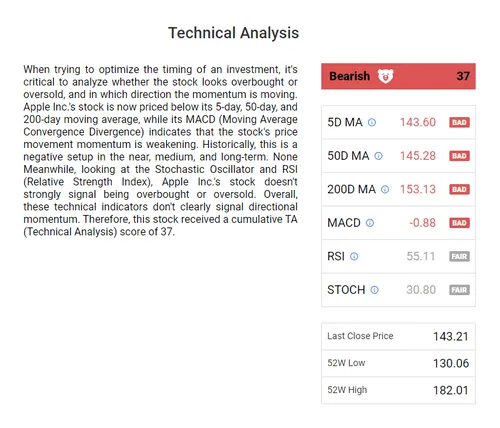20 Great Facts For Choosing AI Stock Analysing Sites
20 Great Facts For Choosing AI Stock Analysing Sites
Blog Article
Top 10 Tips To Customize Ai Trading Platforms To Your Strategy
AI platform for stock-predicting and analyzing stocks offer a number of customization options that let users adapt their platform to their individual trading goals in terms of risk-taking, as well as market condition. Platforms that have powerful customization capabilities can boost your trading efficiency. Below are the top ten tips for assessing the strategy customization capabilities of these platforms:
1. Evaluate Pre-Built Strategy Templates
The variety of templates available: Find out whether the platform provides various pre-designed strategies for different trading styles (e.g. swing trading, day trading, long-term investment).
Utilizability: Find out how easily these templates can be altered to meet your requirements.
Performance historical data. Check if the platform has historical performance information for prebuilt strategies.
2. Review Custom Strategy Creation
Drag-anddrop tools: Look out for platforms that provide intuitive drag and drop interfaces for customizing strategies.
Look into the options for coding on the platform. Advanced users might want to utilize custom scripting language (e.g. Python or R).
Flexibility: Make sure the platform permits you to establish entry and exit rules as well as risk management parameters and other key components of your strategy.
3. Check for Backtesting Capabilities
Historical data: Determine whether you have enough facts to back-test your strategies.
Adjustable parameters: Ensure that you have the ability to alter parameters (e.g. timespans, timeframes or indicators) when backtesting.
Performance metrics: Find out whether the platform has specific performance metrics (e.g., win rate Sharpe ratio drawdown, etc.)) to back-test strategies.
4. Evaluate Real-Time Strategy Testing
Paper trading: Make sure that the platform lets you practice or test your strategies without putting any money at risk.
Live testing is a great way to check if your strategy can be tested in the real world market using very little.
Real-time adjustment: Determine if it is possible to alter strategies in response to current market conditions.
5. Integrate integration with technical indicators
Libraries of indicators: Ensure that the platform has a full toolkit for technical analysis (e.g. MACD, RSI and moving averages).
Custom indicators you should be able to develop or import your own indicators that you can use for your strategies.
Verify the indicators' combination.
6. Check for Risk Management Tools
Stop-loss/take-profit: Ensure the platform allows you to set stop-loss and take-profit levels within your strategies.
Size of your position - Check to see if you have any rules you can use (e.g. a fixed amount or a percentage of your portfolio) to control the risk.
Risk-reward ratio: Examine the platform's support for setting risk/reward ratios on specific trades or trading strategies.
7. Evaluate Multi-Asset Strategy Support
Asset Classes: Make sure that the platform is able to support strategies for a variety of asset types (e.g. ETFs Forex, Options and Stocks).
Strategies for cross-assets : You can try to create strategies involving multiple asset categories (e.g. pair trading or hedges).
Market coverage: Find out whether the platform provides the services you need (e.g. US, international or copyright).
8. Evaluate Automation, Execution and Execution
Automated trading - Make sure that the platform can be capable of automating strategies that are based on the predefined rules.
Order types: Check to see if the system allows for different order types (e.g. limit and market) in the course of executing a strategy.
Latency: Verify that the platform is running at low latency when trading, particularly if you employ high-frequency strategies.
9. Check out Strategies Optimization Tools
Optimization of parameters: Ensure that the platform has tools for optimizing strategy parameters (e.g. grid search or genetic algorithm).
Machine learning integration. Check whether your platform supports machine learning capabilities to enhance and improve strategies.
Scenario Analysis: Determine whether the platform allows testing strategies for different markets (e.g. bull, bear and volatile).
10. Review Community Feedback and User Feedback
User reviews: Study user feedback to gauge the effectiveness of the platform for strategy and personalization.
Community forums: See if you can find forums where members discuss and share their custom strategies.
Support resources: Ensure that the platform has tutorials, webinars, or documentation to help users create and optimize strategies.
Bonus Tips
Free trial period: You are able to try out the customizable options of the platform with a the demo or trial.
Scalability: Ensure that the platform can handle increasingly complex strategies as your trading expands.
Customer support: Find out for assistance in relation to strategy-related issues or questions.
Check these points to determine the AI stock predicting/analyzing platforms' capability to modify strategies. When you do this you can ensure you select a platform that matches your needs for trading and allows you create and improve your personal strategies. A platform that offers flexible options for customization can allow you to adapt to changing market conditions and boost the performance of your trading. Read the recommended next page on ai bots for trading for site tips including trading with ai, ai investing tools, investing ai, ai stock picker, trading with ai, stocks ai, stocks ai, invest in ai stocks, ai trading platform, best stocks to invest in and more.
Top 10 Tips For Evaluating The Reputation And Reviews Of Ai Stock Prediction And Analysis Platforms
To ensure trustworthiness, reliability and effectiveness, it is vital to evaluate the reputation and review of AI-driven prediction and trading platforms. Here are 10 tips to assess their reputations and reviews.
1. Check Independent Review Platforms
Look at reviews on trustworthy platforms like G2, copyright or Capterra.
The reason: Independent platforms provide unbiased feedback by real users.
2. Study case studies and reviews
You can find user testimonials or case studies by visiting the platform's own website, as well as third-party websites.
What are they? They provide an insight into the performance in the real world and the user's satisfaction.
3. Examine Expert Opinions of Industry Recognition
TIP: Check whether any experts in the field or analysts that are reputable have viewed the platform or made a recommendation.
Expert endorsements give credibility to claims made by the platform.
4. Social Media Sentiment
Tips: Visit social media platforms for discussions and opinions about the platform (e.g. Twitter, LinkedIn, Reddit).
Social media provides you with the chance to hear opinions and news that are not filtering.
5. Verify Compliance with Regulatory Regulations
TIP: Make sure that the platform is compliant with the financial laws (e.g., SEC, FINRA) and data privacy laws (e.g. GDPR, e.g.).
Why: Compliance is essential in order to make sure that the platform is operating legally and ethically.
6. Look for transparency in performance metrics
Tips: Check whether the platform uses transparent performance metrics.
What's the reason? Transparency builds trust and lets users assess the effectiveness of the platform.
7. Be aware of the quality of service provided by customers.
Review the reviews for details on customer service and its efficacy.
What is the reason? A solid support system is essential for resolving problems and ensuring that customers are satisfied with their experience.
8. Red Flags to Look for in Reviews
Tip: Look for recurring complaints, like low performance, hidden charges or the absence of any updates.
The reason is that a pattern of consistently negative feedback could indicate issues on the platform.
9. Evaluation of User Engagement and Community Engagement
Tip Check whether the platform has a vibrant user community (e.g. Discord, forums), and that it engages regularly with its members.
Why: A strong user base is a sign of appreciation and love.
10. Find out the track record of the company.
Learn about the company's history, leadership and previous performance in the area of financial technology.
The reason: A track record increases confidence in the platform's reliability and experience.
Bonus Tip: Compare Multiple Platforms
Compare reviews and reputations to identify platforms that most closely match your requirements.
With these suggestions You can look over the credibility and reviews of AI-based stock prediction and trading solutions and ensure you pick the most reliable and effective solution. Follow the most popular free ai tool for stock market india blog for more info including chart ai trading, stocks ai, best copyright prediction site, ai investing, ai stocks to invest in, ai bots for trading, best ai for trading, stock analysis app, ai stock picker, invest in ai stocks and more.